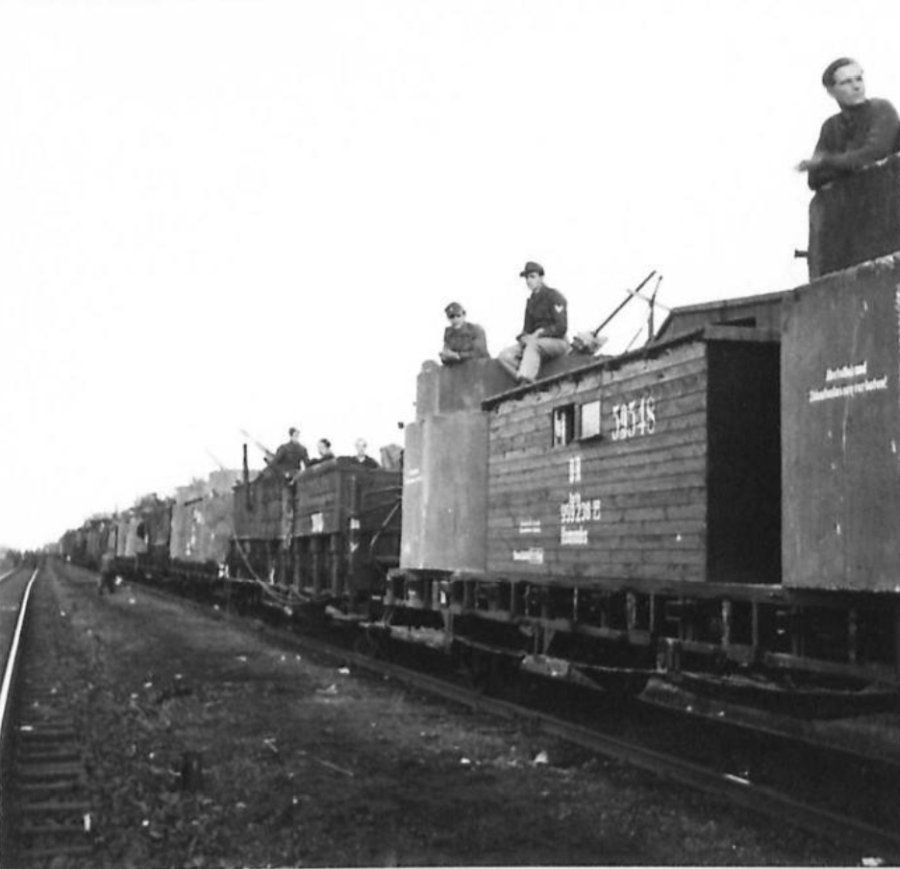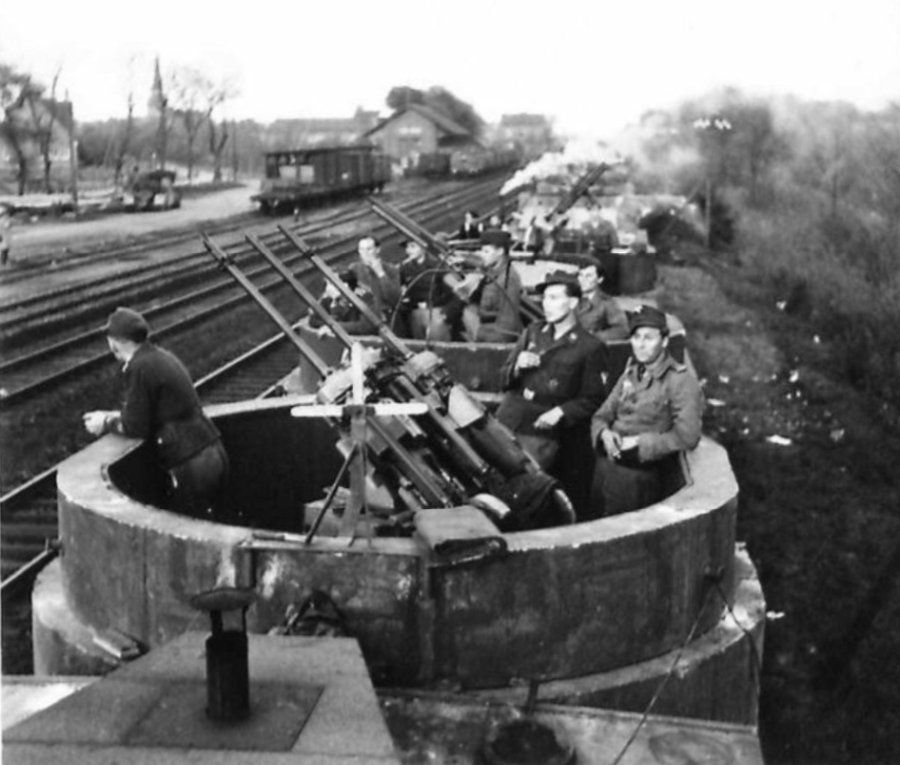Eyewitness report by Hans Höhler from Essen at the end of the war

Ein schwer bewaffneter deutscher Transportzug der Wehrmacht im nördlichen Raum Cuxhavens.
Quelle: Imperial War Museum/GB - IWM BU 5562

A wagon with a protected 2 cm triple anti-aircraft gun to defend against Allied air attacks. The photos were probably taken in the Basbeck area. Source: Imperial War Museum/GB - IWM BU 5562
After my injury on December 24, 1944, I was transferred from the 53rd Fighter Wing "LEGION CONDOR" to a railway transport anti-aircraft unit. In Hamburg I took over a double turret car with two 2 cm triple guns. The operational station was Lüneburg, where a young anti-aircraft lieutenant, just 20, led the 2.E.Tr./1005. The mission was to provide escort for Wehrmacht passenger transport - tank and ammunition trains against low-flying aircraft. The anti-aircraft squad, consisting of a double turret and a single turret car, was assembled in Lüneburg. The anti-aircraft squad leader was a sergeant from Delmenhorst, who also came from the flying staff. In mid-March 1945 we received our last major assignment. Escort for a V1 train to Holland. On the way back we took V1 empties with us. We drove across the German-Dutch border in North Holland again. Two days later it was closed to all Wehrmacht members. We then continued via Varel and Wilhelmshaven to Brake. There we were taken across the Weser in a barge. We arrived in Cuxhaven around April 20th. Until May 3rd we escorted passenger trains from Cuxhaven to Wesermünde, and on May 5th I saw the first Tommy. For me as a young boy, I was only 18 years old, the world was coming to an end. But luck was on our side, and part of northern Germany was designated as an internment zone. Half of the German Air Force was stationed there. After handing in our weapons, we marched from Otterndorf to Dingwörden, where we found accommodation with around 30 men on the Wilke farm. We cleaned out the horse and cow stables and made ourselves comfortable there; we were self-catering, so to speak. In Otterndorf we stole a wagon full of wheat flour, and farmer Wilke gave us a pig and a calf. When the American 406th Fighter Group arrived in Nordholz on June 5th, our boring camp life was over. Every two days a GMC truck came and picked us up for work at the Nordholz airfield. The American drivers sometimes drove like the devil past the trees on the road. We were always happy when we could finally get off. Our main task was to fill in the blast holes and bomb craters on the site. We also built a few living and work barracks. On August 12th, 1945, we finally went home to our mothers.


